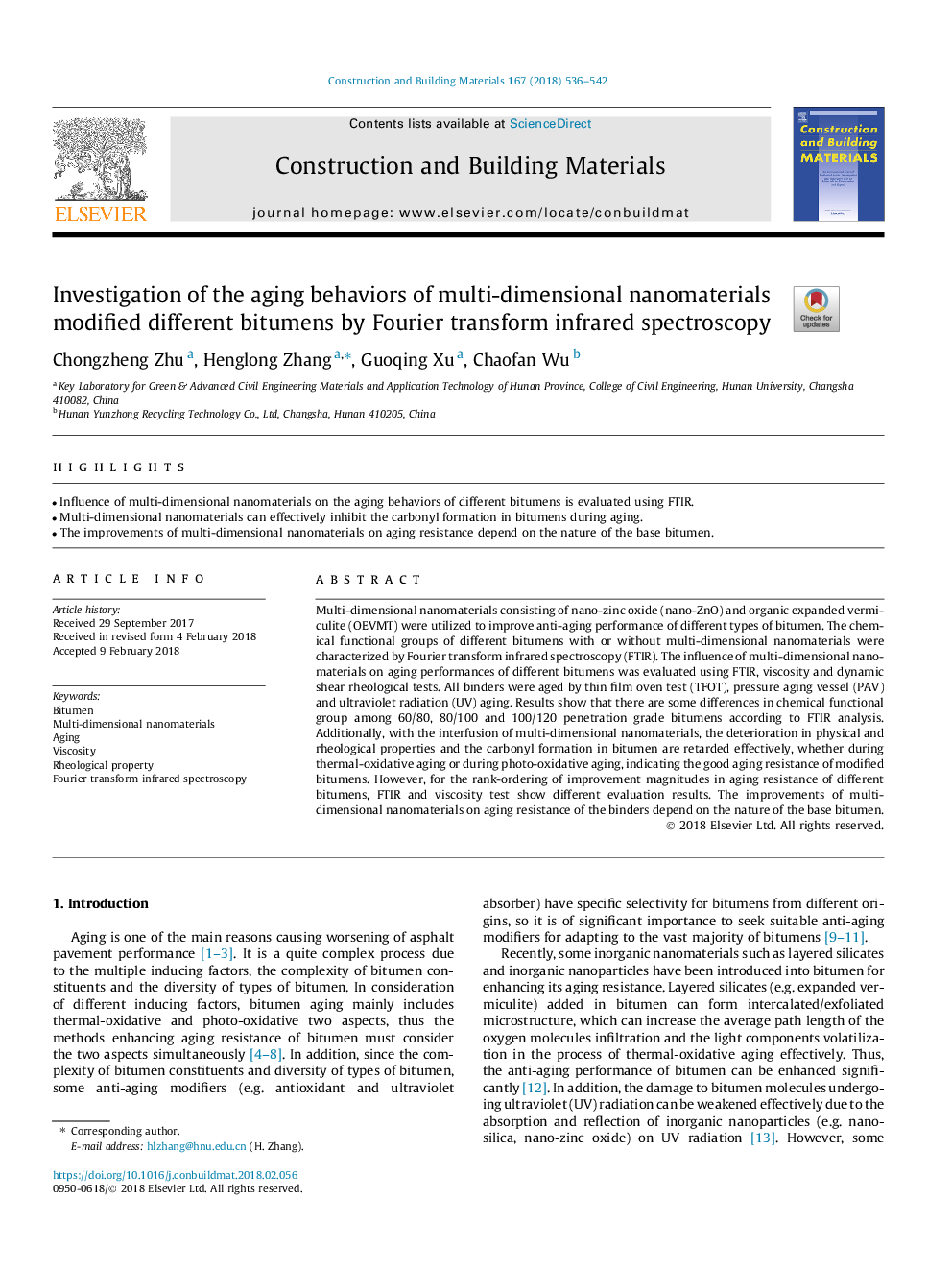| Article ID | Journal | Published Year | Pages | File Type |
|---|---|---|---|---|
| 6715171 | Construction and Building Materials | 2018 | 7 Pages |
Abstract
Multi-dimensional nanomaterials consisting of nano-zinc oxide (nano-ZnO) and organic expanded vermiculite (OEVMT) were utilized to improve anti-aging performance of different types of bitumen. The chemical functional groups of different bitumens with or without multi-dimensional nanomaterials were characterized by Fourier transform infrared spectroscopy (FTIR). The influence of multi-dimensional nanomaterials on aging performances of different bitumens was evaluated using FTIR, viscosity and dynamic shear rheological tests. All binders were aged by thin film oven test (TFOT), pressure aging vessel (PAV) and ultraviolet radiation (UV) aging. Results show that there are some differences in chemical functional group among 60/80, 80/100 and 100/120 penetration grade bitumens according to FTIR analysis. Additionally, with the interfusion of multi-dimensional nanomaterials, the deterioration in physical and rheological properties and the carbonyl formation in bitumen are retarded effectively, whether during thermal-oxidative aging or during photo-oxidative aging, indicating the good aging resistance of modified bitumens. However, for the rank-ordering of improvement magnitudes in aging resistance of different bitumens, FTIR and viscosity test show different evaluation results. The improvements of multi-dimensional nanomaterials on aging resistance of the binders depend on the nature of the base bitumen.
Related Topics
Physical Sciences and Engineering
Engineering
Civil and Structural Engineering
Authors
Chongzheng Zhu, Henglong Zhang, Guoqing Xu, Chaofan Wu,
